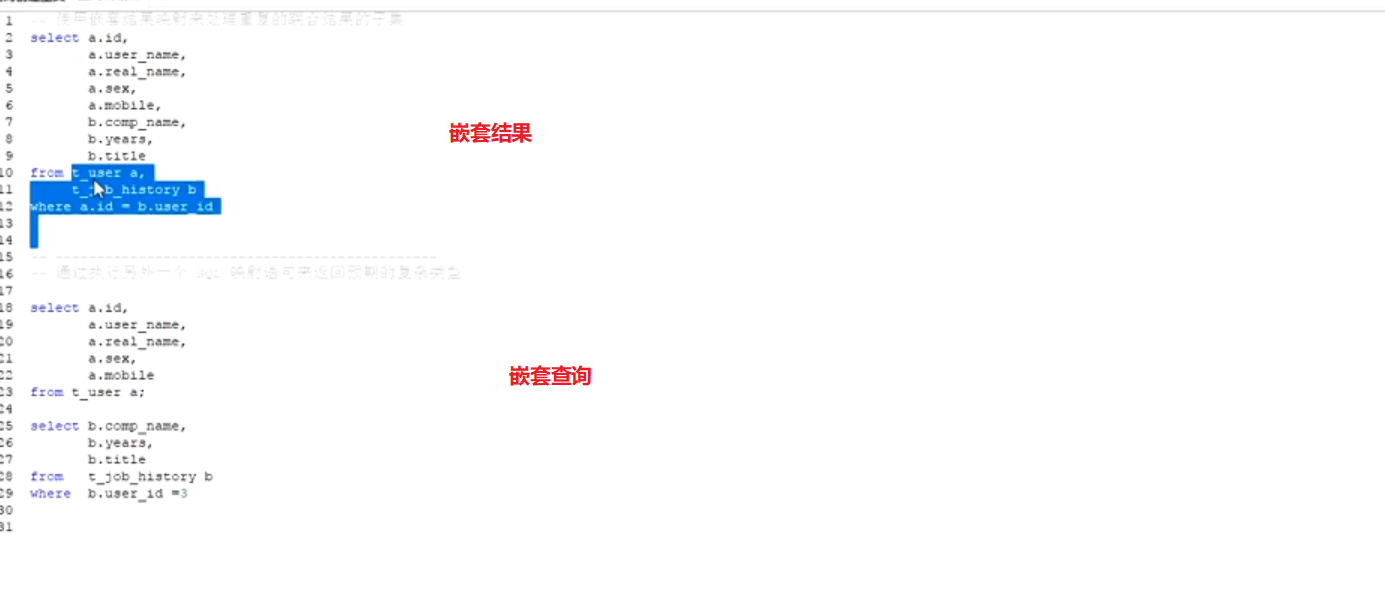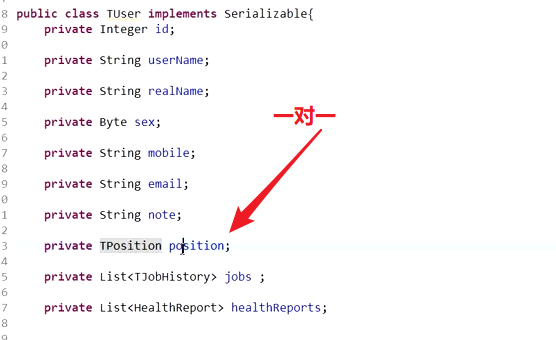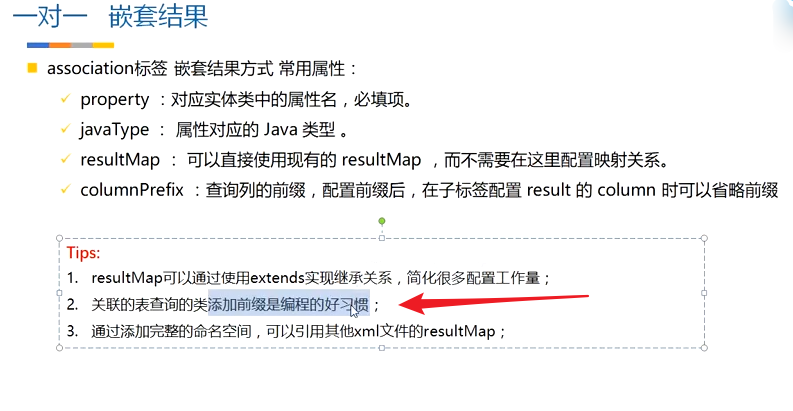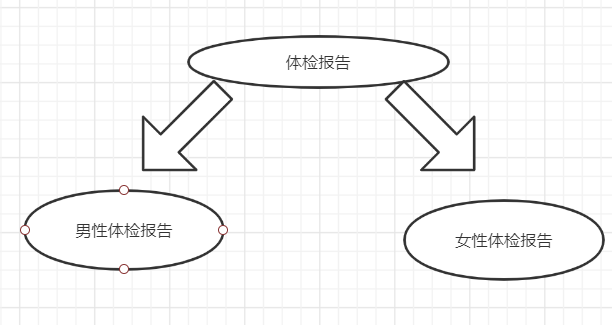
什么是嵌套结果?:
即一条 sql 语句搞定关联关系
什么是嵌套查询:?
两个以上 的 方式搞定 关联关系
第一种 管理系统用的比较多

设置 fetchType 可以实现一个 按需加载
result Map 高级用法: 使用 extend 关键字 集成 resultMap
<?xml version="1.0" encoding="UTF-8" ?> <!DOCTYPE mapper PUBLIC "-//mybatis.org//DTD Mapper 3.0//EN" "http://mybatis.org/dtd/mybatis-3-mapper.dtd" > <mapper namespace="com.enjoylearning.mybatis.mapper.TUserMapper"> <resultMap id="BaseResultMap" type="TUser"> <id column="id" property="id" /> <result column="note" property="note" /> </resultMap> <resultMap id="userAndPosition1" extends="BaseResultMap" type="TUser"> <association property="position" javaType="TPosition" columnPrefix="post_"> <id column="id" property="id"/> </association> </resultMap> <sql id="Base_Column_List"> id, user_name, real_name, sex, mobile, email, note, position_id </sql> <select id="selectUserPosition1" resultMap="userAndPosition1"> select a.id,user_name,real_name,sex, mobile, from t_user a, t_position b where a.position_id = b.id </select> <insert id="insertForeach4Batch" useGeneratedKeys="true" keyProperty="id"> insert into t_user (user_name, real_name,sex, mobile,email,note,position_id) values( #{user.userName,jdbcType=VARCHAR}, #{user.realName,jdbcType=VARCHAR}, #{user.note,jdbcType=VARCHAR}, #{user.position.id,jdbcType=INTEGER}) </insert> </mapper>

一些常用的技巧:
比如 A,B 两个表 都有 id, 这个时候需要 给两个相同字段取个别名
最好是加个前缀
比如 A_id , B_id
建议是 给子表重命名字段


建议给 mapper 添加个命名空间,这样可以 直接引用别的 xml 的 代码片段,达到复用的效果
比如:
<mapper namespace="com.enjoylearning.mybatis.mapper.TUserMapper">
mybatis 还有一种用法:嵌套查询

可以在 resultMap 中进行制定:
<resultMap id="userAndPosition2" extends="BaseResultMap" type="TUser"> <association property="position" fetchType="lazy" column="{position_id=id}" select="com.enjoylearning.mybatis.mapper.TPositionMapper.selectByPrimaryKey" /> </resultMap>

<resultMap type="domain.User" id="user"> <id column="id" property="id"/> <result column="age" property="age"/> <collection column="id" property="orders" ofType="domain.User_orders" select="selectOrderByUser"> <id column="id" property="id"/> <result column="name" property="name"/> </collection>
<resultMap id="blogResult" type="Blog"> <association property="author" column="{id=author_id,likename=author_name}" javaType="Author" select="selectAuthor"/> </resultMap>
相关的博客 文章: https://www.cnblogs.com/whb11/p/7230096.html
https://www.cnblogs.com/jimmy-muyuan/p/5459970.html
column = " { param1 = col1, param2 = col2 } " 这样子传递参数
discriminator 鉴别器 的使用
<resultMap id="userAndHealthReport" extends="BaseResultMap" type="TUser"> <discriminator column="sex" javaType="int"> <case value="1" resultMap="userAndHealthReportMale"/> <case value="2" resultMap="userAndHealthReportFemale"/> </discriminator> </resultMap>

可以面向接口编程, 当 sex = 1 的时候,使用 男性体检报告.class new 一个对象
当 sex=2 的时候,使用 女性体检报告 new 一个对象
这种 就是在返回数据的 时候 动态 使用策略【类似于策略模式】, 通过鉴别器 考虑使用哪种类型
举个例子:
<resultMap id="userAndHealthReportMale" extends="userAndHealthReport" type="TUser"> <collection property="healthReports" column="id" select= "com.enjoylearning.mybatis.mapper.THealthReportMaleMapper.selectByUserId"></collection> </resultMap> <resultMap id="userAndHealthReportFemale" extends="userAndHealthReport" type="TUser"> <collection property="healthReports" column="id" select= "com.enjoylearning.mybatis.mapper.THealthReportFemaleMapper.selectByUserId"></collection> </resultMap> <resultMap id="userAndHealthReport" extends="BaseResultMap" type="TUser"> <discriminator column="sex" javaType="int"> <case value="1" resultMap="userAndHealthReportMale"/> <case value="2" resultMap="userAndHealthReportFemale"/> </discriminator> </resultMap>
举个例子:
如果 orderType = 1, 去查询 order_consumer 表, 如果 orderType= 2, 去查询 order_pay 表
这个时候,就可以这样搞 ,配合嵌套查询,就特别方便